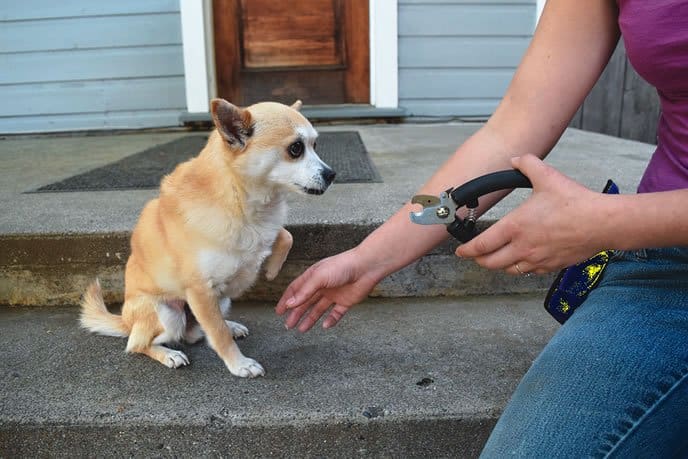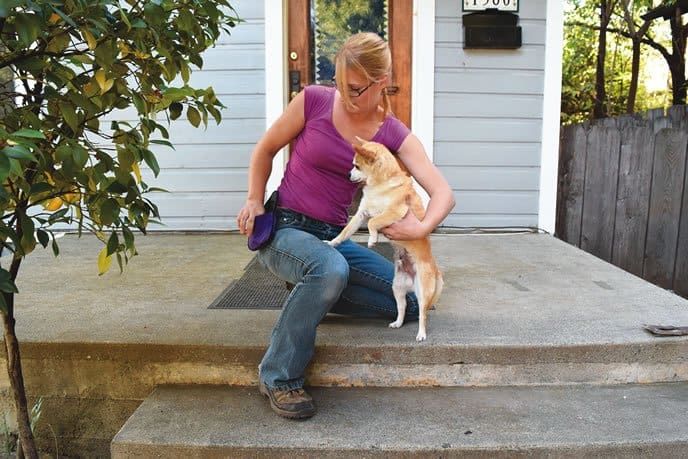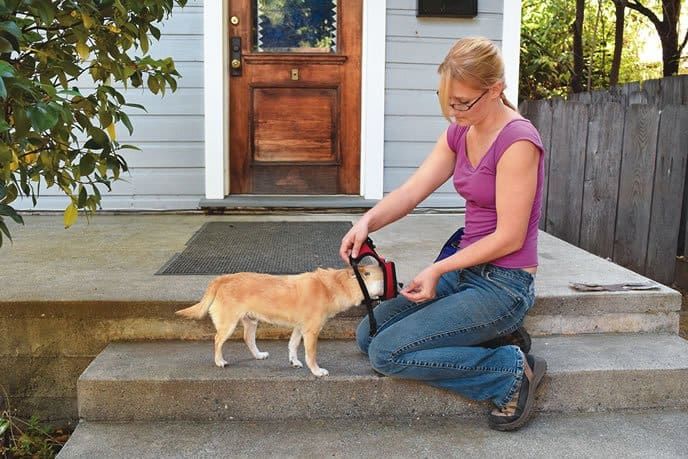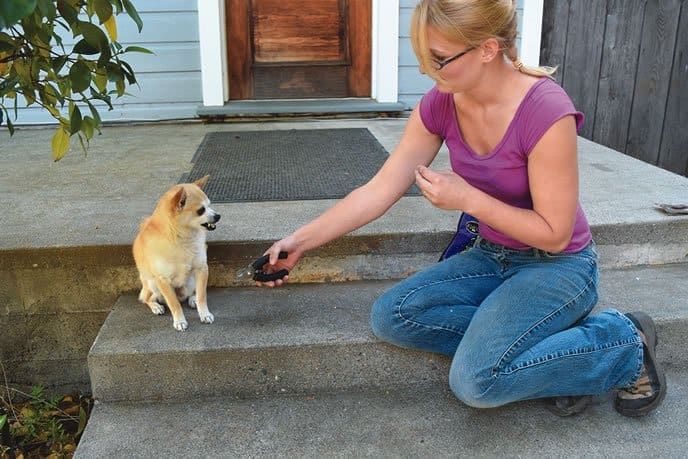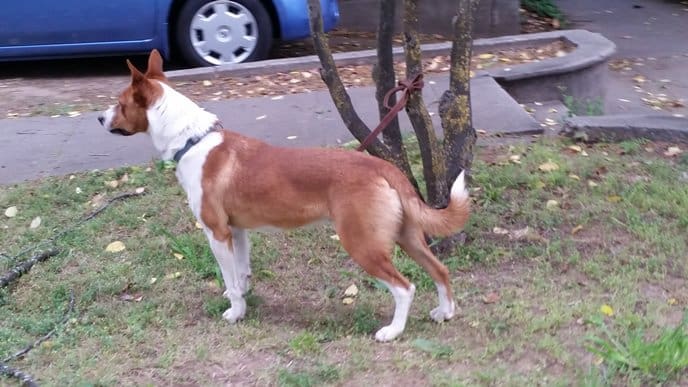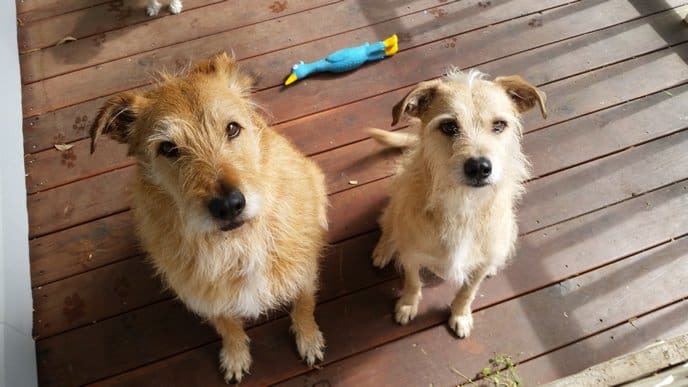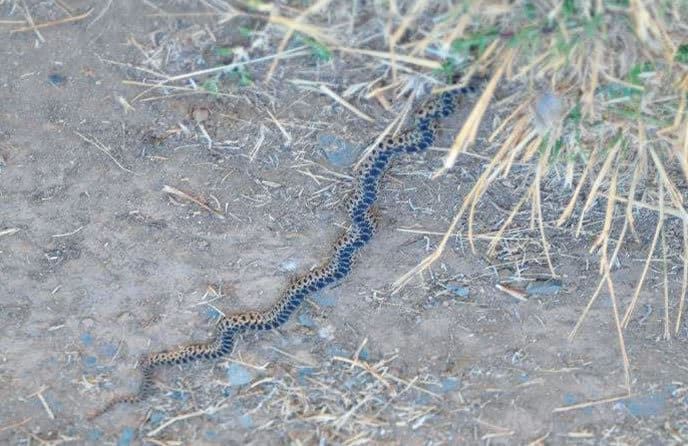
I’ve been using my friend Christine as a model for our training articles lately. She has lots of dog-handling experience, looks great in photos, has two very large dogs that we can use (and have) for the photo shoots, and isn’t fazed by anything I ask her to do for the photos.
That is, she hasn’t been fazed yet. But she definitely hesitated when we were taking the pictures of my middle-aged Chihuahua, Tito, for Pat Miller’s article on dogs who hate handling (see “What to Do if your Dog Hates Certain Husbandry Chores (Grooming, Harnessing, Trimming, etc.”). Christine takes care of my dogs when I have to leave town, so she knows Tito and his quirks.
When Tito came to live with us a few years ago, he belonged to my husband’s niece, who bought him as a puppy while still in college. Then she graduated and started looking for a job, and like a lot of young adults, sent her dog to stay with other people while she moved about; Tito had at least five different temporary homes before I was asked whether I could take him “for a few months.”
I said yes, even though I suspected he’d end up with us forever, because he can be a fun little guy. For all of his travails, he still likes people, especially those he’s met before; if you were friendly to him once, he will go crazy when you meet again. He has the most perfect manners on leash of any dog I’ve ever known, never ever allowing the leash to tighten for a moment. He’s a tennis ball addict, and he hikes and swims like a miniature Labrador!
But Tito does not like being picked up or carried. If someone tries to lift him off the ground (“Oh, what a cute little dog!”), they get a rude surprise – a dramatic snarl/bark and air-snap (he’s never actually bitten anyone).
I was educated by Pat Miller years ago to use counter-conditioning and desensitization (CC&D) to change how a dog feels about things – and Tito has had a lot of these sessions over the past few years. For some time, I’ve been able to pick him up without a problem, and even trim his nails and brush his teeth. Other people can, too – as soon as Tito feels confident that they aren’t going to hurt him or force him to do something.
If he perceives a threat, Tito gets ready for battle. If you yell at him, he’ll immediately growl back. If you escalate, so will he. I’m certain that if someone tried to physically punish and force him to comply with something he hadn’t agreed to, he’d fight to his literal death.
But because he’s also experienced force-free training, with no negative consequences for failing to perform a certain behavior, and rich rewards for the tiniest increments of improvement, Tito now generally chooses to try to figure out and do what we want him to do.
When Tito and Christine first met – and she immediately tried to pick him up – she experienced his snarly “I don’t do dat!” response. So when I told her I wanted her to pick him up and clip his nails for some photos, she hesitated – not because she was afraid, but because she knows him well and didn’t want to push him into a corner.
We started by doing just that, in a mild way, because I knew we could elicit a snarl (or worse), by waving some clippers in his direction (see photo in What to Do if your Dog Hates Certain Husbandry Chores (Grooming, Harnessing, Trimming, etc). Then we started a CC&D session, with Christine giving him bits of chicken for his cooperation. Because we had started rudely, and pushed forward at an unrecommended fast pace (for the sake of the photos), Tito was wary at first. But when, halfway through the session that was supposed to lead up to clipping a single nail, Tito spontaneously hopped into Christine’s lap as if to say, C’mon, let’s get this over with!, she was surprised and touched. She didn’t hesitate at that point, though. Instead, she praised him, gave him some chicken, and clipped his nails!




